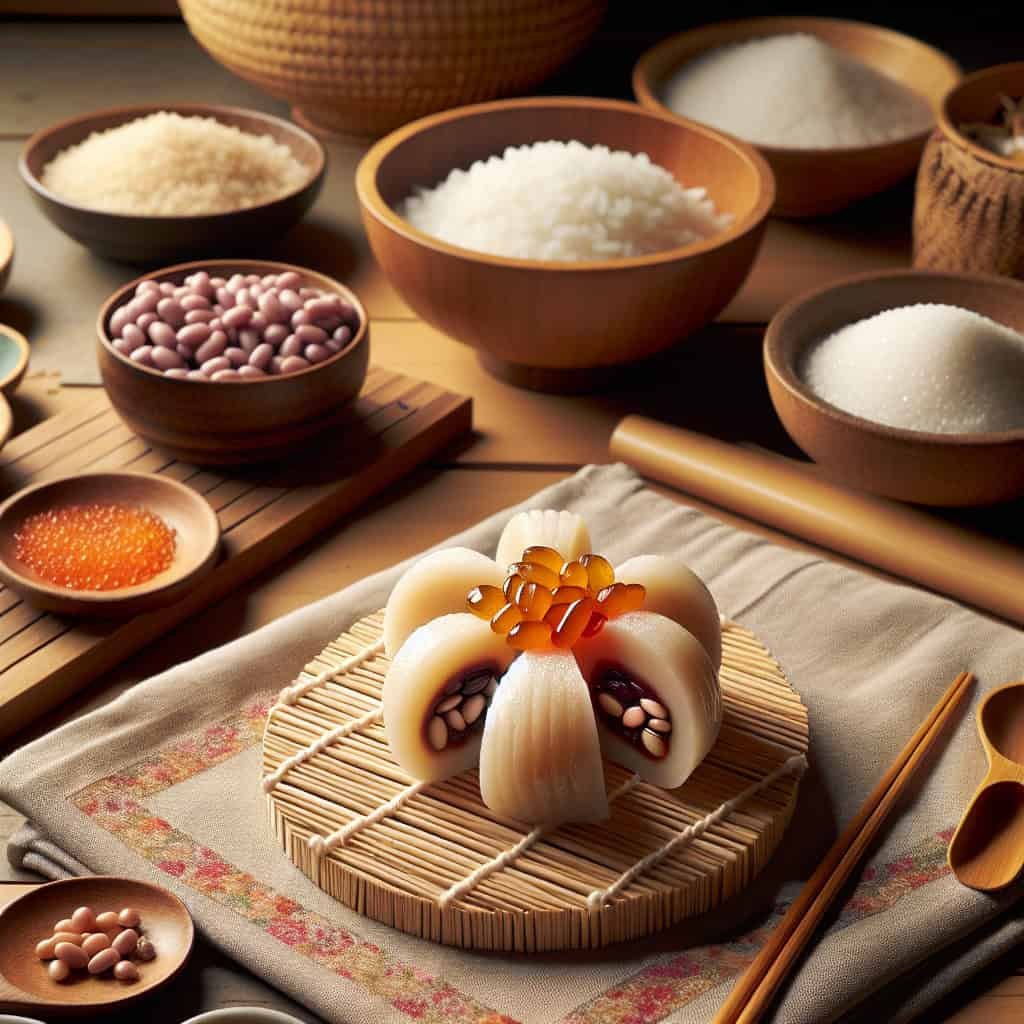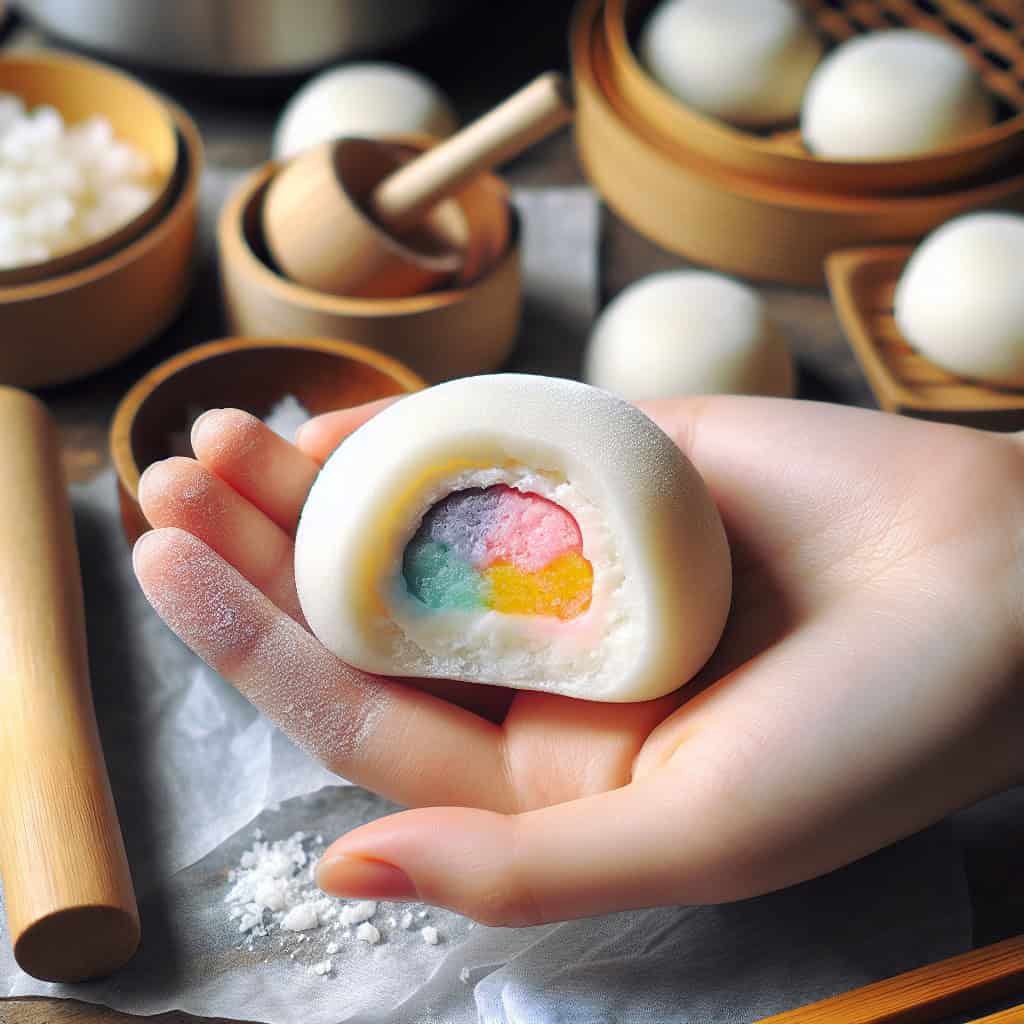Have you ever experienced the joy of making Japanese Mochi in the comfort of your own kitchen? This delightful treat, known for its soft and chewy texture, has been captivating taste buds for centuries. With countless possibilities for fillings, from traditional red bean paste to modern favorites like matcha or even Nutella, the options are simply mouthwatering. Whether you are a seasoned Mochi maker or a novice looking to embark on a culinary adventure, exploring different fillings is half the fun! So why not share your go-to filling and join the Mochi-making conversation? Making Japanese Mochi at home can be a fun and rewarding experience. Whether you’re a fan of this popular Japanese sweet treat or simply curious about trying something new, making your own Mochi allows you to personalize the flavors and fillings to suit your preferences. In this article, we will guide you through the process of making Mochi from scratch, from choosing the right ingredients to shaping, filling, and cooking the Mochi. We’ll also explore different variations of Mochi, its significance in Japanese culture, and give you some tips and tricks for success along the way. So let’s get started and discover the wonderful world of homemade Mochi!
Choosing the Right Ingredients
To make Mochi, you will need a few key ingredients that are easily accessible. The main ingredients include glutinous rice flour, water, sugar, and cornstarch or potato starch for dusting. These ingredients can be found in most Asian grocery stores or online. Additionally, you can opt to use food coloring to add a touch of vibrancy to your Mochi, although this is entirely optional and based on personal preference. Now that you have your ingredients ready, let’s move on to preparing the Mochi dough.
Preparing the Mochi Dough
The Mochi dough is the heart of this delightful treat. To make the dough, start by mixing glutinous rice flour and water in a bowl. Stir until the mixture forms a smooth and sticky consistency. Next, add sugar to the mixture to give your Mochi a subtle sweetness. If desired, you can also add food coloring at this stage to enhance the visual appeal of your Mochi. Once all the ingredients are well combined, it’s time to knead the dough. Kneading helps develop the characteristic chewy texture of Mochi. Once you achieve a smooth and elastic texture, let the dough rest for a while to allow the flavors to meld together.

Preparing the Filling
Now that you have prepared the Mochi dough, it’s time to think about the filling. The filling is what adds variety and flavor to your Mochi. Traditional fillings include Azuki bean paste, known as “anko,” which is made from sweetened red beans. Matcha green tea paste is also popular and adds a delicious earthy flavor to your Mochi. If you prefer fruity fillings, you can use mashed fruits like strawberries, mangoes, or peaches. For a nutty twist, try fillings made with crushed peanuts or sesame seeds. The beauty of homemade Mochi is that you can customize the filling to your liking, so feel free to experiment and create your unique combinations.
Shaping and Filling the Mochi
Once you have your Mochi dough and filling ready, it’s time to shape and fill the Mochi. Start by dividing the dough into small portions, about the size of a golf ball. Flatten each portion of the dough using your palms or a rolling pin. Place a spoonful of your desired filling in the center of the flattened dough. Carefully seal the dough by bringing the edges together and pinching them tightly. Shape the Mochi into your preferred form, whether it’s a ball, a cube, or a disk. To prevent stickiness, coat the Mochi with cornstarch or potato starch.

Cooking the Mochi
There are several methods you can use to cook your Mochi. The most traditional method is steaming, which involves placing the Mochi on a steamer and steaming it until it becomes soft and translucent. Alternatively, you can use the microwave method, where you microwave the Mochi for short intervals until it becomes pliable and chewy. Another option is the boiling method, which involves dropping the Mochi into boiling water and cooking it until it floats to the surface. If you’re feeling adventurous, you can even try baking the Mochi to create Mochi cakes with a slightly crispy exterior. Choose the cooking method that suits your preferences and the equipment you have available.
Enjoying your Homemade Mochi
Once your Mochi is cooked and ready, it’s time to enjoy the fruits of your labor! Mochi can be enjoyed in various ways. You can simply savor their natural flavors as they are, or you can get creative and serve them with various accompaniments. Popular serving suggestions include dusting the Mochi with kinako (roasted soybean flour), topping them with a drizzle of honey or a sprinkle of powdered sugar, or even dipping them in a sweet soy sauce called “mitarashi.” The possibilities are endless, so feel free to experiment and find your favorite way to indulge in homemade Mochi.

Storing Leftover Mochi
If you happen to have leftover Mochi, you can store them to enjoy later. To prevent them from drying out, wrap the Mochi in plastic wrap or place them in an airtight container. Store them at room temperature for a day or two, or for longer shelf life, keep them in the refrigerator. Just be aware that Mochi tends to harden when refrigerated, so make sure to let them come back to room temperature before enjoying them again.
Reheating and Refreshing Mochi
If your Mochi has become slightly hardened, don’t worry! There are ways to bring them back to their original soft and chewy texture. One method is to steam the hardened Mochi for a few minutes until they become pliable again. Alternatively, you can microwave them for a few seconds to warm them up. Once they’re soft and chewy, you can enjoy them again as if they were freshly made!

Tips and Tricks for Success
To ensure the success of your homemade Mochi, here are some helpful tips and tricks:
Consistency of the Mochi Dough
Achieving the right consistency for your Mochi dough is crucial. The dough should be soft and pliable but not overly sticky. If the dough is too sticky, add a little more rice flour. If it’s too dry and crumbly, add a splash of water. Finding the balance may take a bit of practice, so don’t get discouraged if your first attempt doesn’t turn out perfectly.
Using Starch to Prevent Stickiness
Coating your hands, utensils, and work surface with cornstarch or potato starch is key to preventing the Mochi from sticking. Dust your hands with starch before handling the dough, and sprinkle starch on your work surface to prevent the Mochi from sticking as you shape it.
Working with Different Fillings
Different fillings have different textures and moisture levels, which can affect the Mochi’s overall consistency. Use caution when adding fillings that contain a lot of moisture, as they can make the Mochi soggy. Consider adjusting the amount of rice flour accordingly to achieve the desired consistency.
Experimenting with Flavors and Colors
Have fun with flavors and colors when making Mochi! You can incorporate various extracts, like vanilla or almond, to add a subtle aroma to the dough. Additionally, food coloring can be used to create vibrant and visually appealing Mochi. Let your creativity shine and experiment with different combinations until you find your perfect Mochi creation.
Avoiding Common Mistakes
When cooking Mochi, it’s important not to overcook or undercook it. Overcooking can lead to a tough and chewy texture, while undercooking can result in a gooey and raw center. Be mindful of the cooking times and follow the instructions carefully to achieve the ideal consistency.
Mochi Variations and Regional Specialties
Mochi comes in many different forms and flavors, making it a versatile treat. Some popular variations include Kinako Mochi, which is coated in roasted soybean flour, and Kusa Mochi, which is infused with mugwort for a unique taste. In addition to these variations, different regions in Japan have their own Mochi specialties. For example, Kyoto is famous for its Yatsuhashi Mochi, while Hiroshima is known for its Momiji Manju, a maple leaf-shaped Mochi filled with various sweet fillings. Exploring the regional specialties of Mochi adds an extra layer of cultural richness to your Mochi-making journey.

Mochi and Japanese Culture
Mochi holds a significant place in Japanese culture. It is traditionally associated with auspicious occasions, celebrations, and seasonal festivals. In fact, Mochi plays an important role in ceremonial rituals and symbolic practices. In Japan, Mochi is often used as an offering to deities during Shinto rituals, and it is also a central part of the Japanese New Year celebration, where families gather to pound Mochi together. The sticky nature of Mochi symbolizes the importance of family and unity in Japanese culture. Today, Mochi continues to hold a prominent place in Japanese cuisine and is also enjoyed in various forms around the world.
Conclusion
Making Japanese Mochi at home can be a delightful and rewarding experience. From choosing the right ingredients to shaping, filling, and cooking the Mochi, you have the freedom to create your own unique varieties of this beloved treat. By exploring different flavors, fillings, and cooking methods, you can truly make Mochi your own. Whether you’re celebrating a special occasion or simply indulging in a sweet treat, homemade Mochi is sure to bring joy and satisfaction. So why not gather your ingredients and try your hand at making Japanese Mochi at home? With a little practice and a touch of creativity, you’ll be enjoying your own delicious homemade Mochi in no time!
